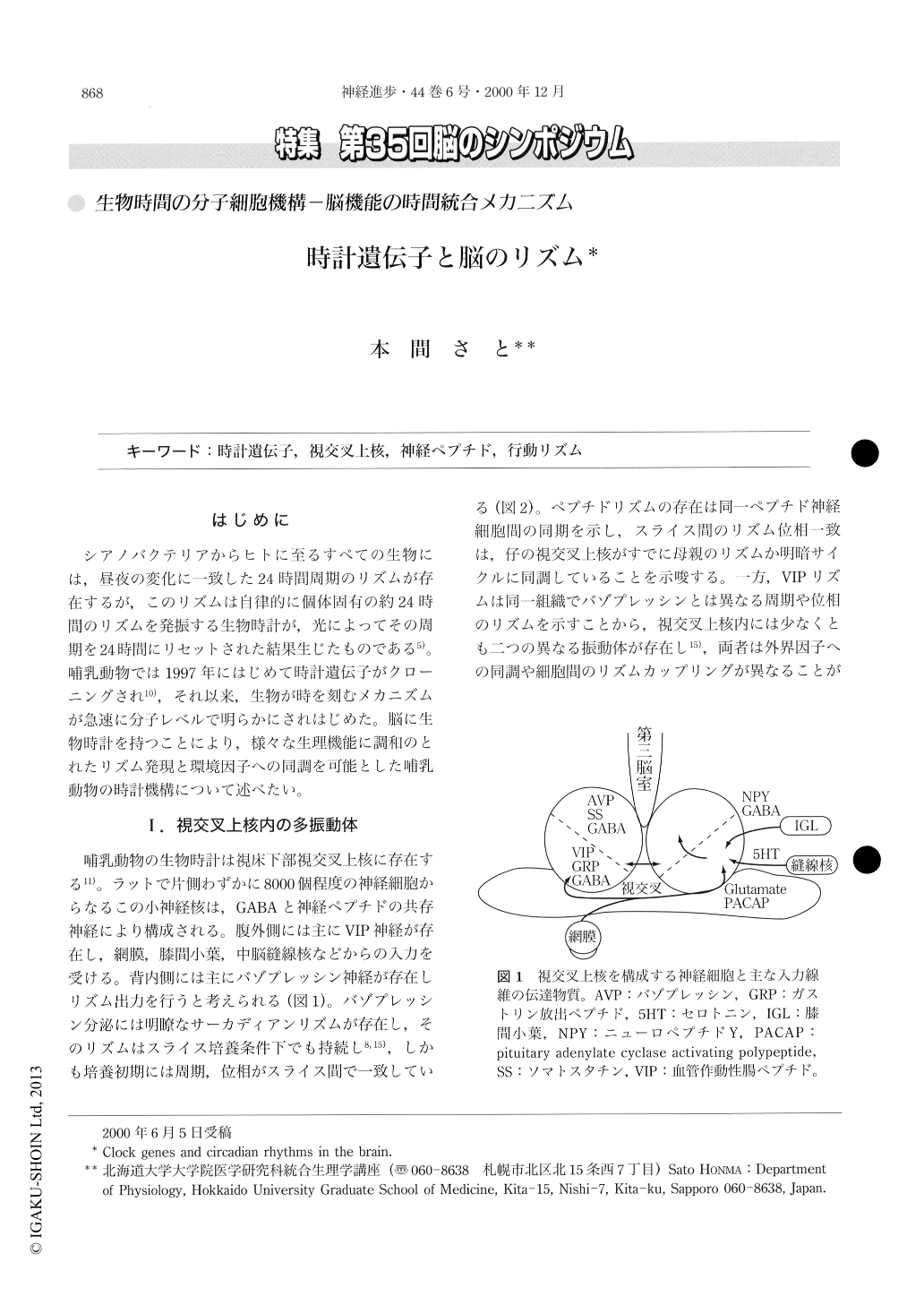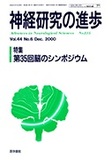Japanese
English
- 有料閲覧
- Abstract 文献概要
- 1ページ目 Look Inside
はじめに
シアノバクテリアからヒトに至るすべての生物には,昼夜の変化に一致した24時間周期のリズムが存在するが,このリズムは自律的に個体固有の約24時間のリズムを発振する生物時計が,光によってその周期を24時間にリセットされた結果生じたものである5).哺乳動物では1997年にはじめて時計遺伝子がクローニングされ10),それ以来,生物が1時を刻むメカニズムが急速に分子レベルで明らかにされはじめた。脳に生物時計を持つことにより,様々な生理機能に調和のとれたリズム発現と環境因子への同調を可能とした哺乳動物の時計機構について述べたい。
The suprachiasmatic nucleus (SCN), a master clock of mammals, is composed of multiple neurons which have their own circadian oscillator. Therefore, integration within the SCN is critical for the expression of circadian rhythms in vivo. Recent findings suggest that circadian rhythm is generated within each oscillatory neuron through transcription-translation negative feedback loop of the clock genes, such as Per, Clock and BMAL1. Clock gene expression is also rhythmic in tissues outside the SCN.

Copyright © 2000, Igaku-Shoin Ltd. All rights reserved.


